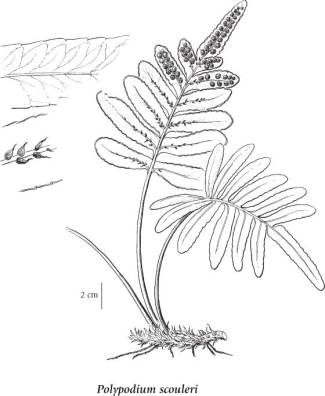| A shade-intolerant, submontane to montane. Pacific North American fem. Occurs in hypermaritime to maritime wet cool mesothermal climates on very shallow soils; its occurrence decreases with increasing elevation and continentality. Common in ocean sprayaffected (littoral), open-canopy forests in the proximity of the Pacific Ocean. As does P. glycyrrhiza. P. scouleri inhabits exposed mineral soils, coarse fragments (boulders), and cliffs affected by temporary surface flow of water and fine organic materials. Common on stems and branches of trees, typically on Picea sitchensis. Characteristic of hypermaritime mesothermal forests. Source: Indicator Plants of Coastal British Columbia (Information applies to coastal locations only)
|
